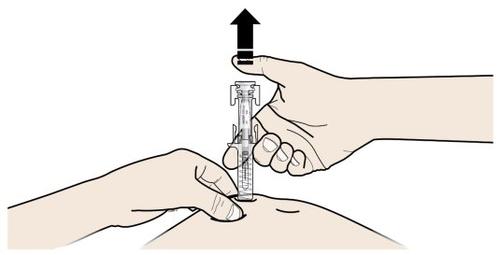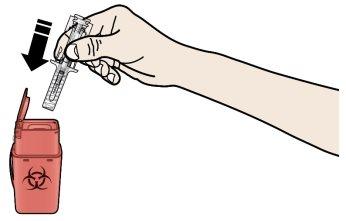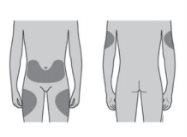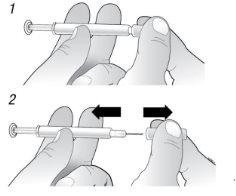
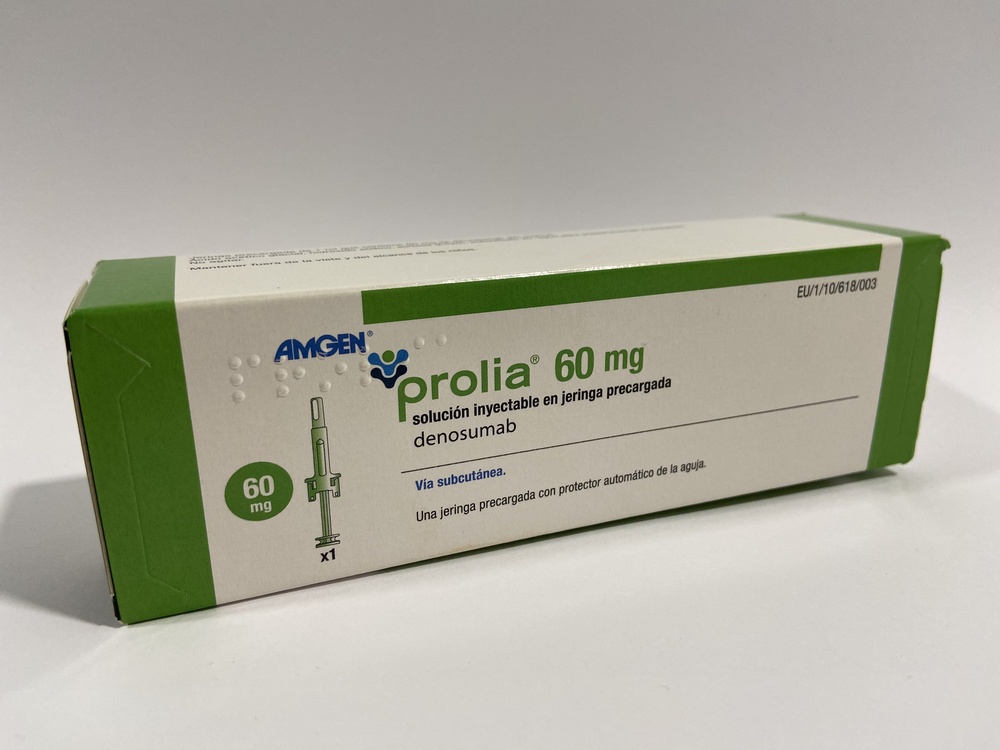
PROLIA 60 mg SOLUTION FOR INJECTION IN PRE-FILLED SYRINGE

Ask a doctor about a prescription for PROLIA 60 mg SOLUTION FOR INJECTION IN PRE-FILLED SYRINGE

How to use PROLIA 60 mg SOLUTION FOR INJECTION IN PRE-FILLED SYRINGE
Introduction
Package Leaflet: Information for the User
Prolia 60mg solution for injection in pre-filled syringe
denosumab
Read all of this leaflet carefully before you start using this medicine because it contains important information for you.
- Keep this leaflet, you may need to read it again.
- If you have any further questions, ask your doctor or pharmacist.
- This medicine has been prescribed for you only. Do not pass it on to others. It may harm them, even if their signs of illness are the same as yours.
- If you get any side effects, talk to your doctor or pharmacist. This includes any possible side effects not listed in this leaflet. See section 4.
- Your doctor will provide you with a patient reminder card, which contains important safety information that you need to know before and during treatment with Prolia.
Contents of the pack
- What is Prolia and what is it used for
- What you need to know before you use Prolia
- How to use Prolia
- Possible side effects
- Storage of Prolia
- Contents of the pack and other information
1. What is Prolia and how does it work and what is it used for
What is Prolia and how does it work
Prolia contains denosumab, a protein (monoclonal antibody) that interferes with the action of another protein in order to treat bone loss and osteoporosis. Treatment with Prolia strengthens bones and reduces the risk of fractures.
Bone is a living tissue that is constantly renewed. Estrogens contribute to the preservation of bone health. After menopause, estrogen levels decrease, which can cause bones to become thinner and more fragile. In the long run, this can lead to a disease called osteoporosis. Osteoporosis can also occur in men due to various causes, including age and/or low levels of the male hormone, testosterone. It can also occur in patients undergoing treatment with glucocorticoids. Many patients with osteoporosis do not have symptoms, although they still have a risk of fracturing bones, especially in the spine, hip, and wrists.
Surgical interventions or medications that stop the production of estrogen or testosterone, used to treat patients with prostate or breast cancer, can also cause bone loss. This makes bones weaker and more prone to breaking.
What is Prolia used for
Prolia is used to treat:
- postmenopausal osteoporosis in women and men who have an increased risk of fracture (bone breakage), reducing the risk of fractures of the hip, spine, and non-spinal locations.
- bone loss caused by a decrease in hormone levels (testosterone) as a result of surgery or treatment with medications in patients with prostate cancer.
bone loss resulting from long-term treatment with glucocorticoids in patients who have a high risk of fracture.
2. What you need to know before you use Prolia
Do not use Prolia:
- if you have low levels of calcium in the blood (hypocalcemia).
- if you are allergic to denosumab or any of the other ingredients of this medicine (listed in section 6).
Warnings and precautions
Talk to your doctor or pharmacist before starting treatment with Prolia.
During treatment with Prolia, you may develop a skin infection with symptoms such as an inflamed and reddened area on the skin, more frequently on the lower leg, which feels hot and sensitive to the touch (cellulitis), and may be accompanied by fever. Tell your doctor immediately if you experience any of these symptoms.
In addition, you should take calcium and vitamin D supplements during treatment with Prolia. Your doctor will discuss this with you.
While receiving Prolia, you may experience low levels of calcium in the blood. Tell your doctor immediately if you notice any of the following symptoms: muscle spasms, contractions, or cramps, and/or numbness or tingling in the fingers of the hands, feet, or around the mouth, and/or seizures, confusion, or loss of consciousness.
In rare cases, very low levels of calcium in the blood have been reported, which have required hospitalization and, in some cases, potentially life-threatening reactions. Therefore, before each dose is administered and, in patients with a predisposition to hypocalcemia, within two weeks after the initial dose, your blood calcium levels will be checked (through a blood test).
Tell your doctor if you have or have had severe kidney problems, kidney failure, if you have needed to undergo dialysis, or if you are taking medications called glucocorticoids (such as prednisolone or dexamethasone), as they may increase the risk of having low levels of calcium in the blood if you do not take calcium supplements.
Problems in the mouth, teeth, or jaw
In patients receiving Prolia for osteoporosis, a rare side effect called osteonecrosis of the jaw (ONJ) (damage to the jawbone) has been reported (may affect up to 1 in 1,000 people). The risk of ONJ increases in patients treated for a long time (may affect up to 1 in 200 people if treated for 10 years). ONJ can also occur after stopping treatment. It is essential to try to prevent the development of ONJ, as it can be a painful condition that can be difficult to treat. To reduce the risk of developing ONJ, follow these precautions:
Before receiving treatment, tell your doctor or nurse (healthcare professional) if:
- you have any problems in your mouth or teeth, such as poor dental health, gum disease, or a planned tooth extraction.
- you do not receive regular dental check-ups or have not had a dental check-up for a long time.
- you are a smoker (as this may increase the risk of dental problems).
- you have been previously treated with a bisphosphonate (used to prevent or treat bone disorders).
- you are taking medications called corticosteroids (such as prednisolone or dexamethasone).
- you have cancer.
Your doctor may ask you to undergo a dental check-up before starting treatment with Prolia.
During treatment with Prolia, you should maintain good oral hygiene and undergo routine dental check-ups. If you use dental prosthetics, make sure they fit properly. If you are undergoing dental treatment or are going to undergo dental surgery (e.g., tooth extractions), tell your doctor about your dental treatment and inform your dentist that you are being treated with Prolia.
Contact your doctor and dentist immediately if you experience any problems in your mouth or teeth, such as loose teeth, pain or inflammation, or ulcers that do not heal or are suppurating, as these could be symptoms of ONJ.
Unusual fractures of the thigh
Some people have developed unusual fractures in the thigh while being treated with Prolia. Talk to your doctor if you experience new or unusual pain in the hip, groin, or thigh.
Children and adolescents
Prolia should not be used in children and adolescents under 18 years of age.
Using Prolia with other medicines
Tell your doctor or pharmacist if you are taking, have recently taken, or might take any other medicines. It is especially important that you tell your doctor if you are being treated with another medicine that contains denosumab.
Do not use Prolia with another medicine that contains denosumab.
Pregnancy and breastfeeding
Prolia has not been tested in pregnant women. It is essential that you tell your doctor if you are pregnant, think you may be pregnant, or plan to become pregnant. Prolia is not recommended during pregnancy. Women of childbearing age should use effective contraceptive methods during treatment with Prolia and for at least 5 months after stopping treatment with Prolia.
If you become pregnant during treatment with Prolia or less than 5 months after stopping treatment with Prolia, tell your doctor.
It is not known whether Prolia is excreted in breast milk. It is essential that you tell your doctor if you are breastfeeding or plan to breastfeed. Your doctor will help you decide whether to stop breastfeeding or stop using Prolia, considering the benefit of breastfeeding for the child and the benefit of Prolia for the mother.
If you are breastfeeding during treatment with Prolia, please tell your doctor.
Talk to your doctor or pharmacist before using any medicine.
Driving and using machines
Prolia has no or negligible influence on the ability to drive and use machines.
Prolia contains sorbitol
This medicine contains 47 mg of sorbitol per ml of solution.
Prolia contains sodium
This medicine contains less than 1 mmol of sodium (23 mg) per 60 mg; this is essentially "sodium-free".
3. How to use Prolia
The recommended dose is a single injection of 60 mg administered under the skin (subcutaneously) once every 6 months. The best places for injection are the top of the thighs and the abdomen. If the injection is given by a caregiver (the person taking care of you), it can also be administered in the outer aspect of the upper arm. Talk to your doctor about the date of the next possible injection. Each pack of Prolia contains a reminder card that can be peeled off from the carton and used to keep track of the date of the next injection.
In addition, you should take calcium and vitamin D supplements during treatment with Prolia. Your doctor will discuss this with you.
Your doctor may decide whether it is better for you or a caregiver to administer the Prolia injection. Your doctor or healthcare professional will show you or your caregiver how to use Prolia. If you want to obtain instructions on how to inject Prolia, read the last section of this leaflet.
Do not shake.
If you miss a dose of Prolia
If you miss a dose of Prolia, the injection should be given as soon as possible. Subsequent injections should be scheduled every 6 months from the date of the last injection.
If you stop treatment with Prolia
To get the most benefit from your treatment and reduce the risk of fractures, it is essential that you use Prolia for the entire period prescribed by your doctor. Do not stop treatment without talking to your doctor first.
4. Possible side effects
Like all medicines, this medicine can cause side effects, although not everybody gets them.
Patients treated with Prolia may develop skin infections (mainly cellulitis) infrequently. Tell your doctor immediatelyif you experience any of these symptoms during treatment with Prolia: a swollen and reddened area on the skin, usually on the lower leg, hot and sensitive to the touch, and may be accompanied by fever.
Rarely, patients receiving Prolia may develop pain in the mouth and/or jaw, inflammation, or ulcers that do not heal in the mouth or jaw, suppurating, numbness, or a feeling of heaviness in the jaw, or tooth mobility. These could be symptoms of bone damage in the jaw (osteonecrosis). Tell your doctor and dentist immediatelyif you experience such symptoms while being treated with Prolia or after stopping treatment.
Rarely, patients receiving Prolia may experience low levels of calcium in the blood (hypocalcemia); very low levels of calcium in the blood may require hospitalization and, in some cases, potentially life-threatening reactions. Symptoms include muscle spasms, contractions, or cramps, and/or numbness or tingling in the fingers of the hands, feet, or around the mouth, and/or seizures, confusion, or loss of consciousness. If you experience any of these, tell your doctor immediately. Low levels of calcium in the blood can also cause a change in heart rhythm called QT prolongation, which can be seen on an electrocardiogram (ECG).
Rarely, unusual fractures of the thigh may occur in patients receiving Prolia. Talk to your doctorif you experience new or unusual pain in the hip, groin, or thigh, as this may be an early indication of a possible fracture of the thigh.
Rarely, allergic reactions may occur in patients receiving Prolia. Symptoms include swelling in the face, lips, tongue, throat, or other parts of the body; rash, itching, or hives on the skin; wheezing or difficulty breathing. Tell your doctorif you experience such symptoms while being treated with Prolia.
Very common side effects(may affect more than 1 in 10 people):
- bone, joint, and/or muscle pain, which can sometimes be intense,
- leg or arm pain (pain in the limbs).
Common side effects(may affect up to 1 in 10 people):
- painful urination, frequent urination, blood in the urine, urinary incontinence,
- upper respiratory tract infection,
- pain, numbness, or tingling that extends to the lower leg (sciatica),
- constipation,
- abdominal discomfort,
- skin rash,
- skin condition with itching, redness, and/or dryness (eczema),
- hair loss (alopecia).
Uncommon side effects(may affect up to 1 in 100 people):
- fever, vomiting, and abdominal pain or discomfort (diverticulitis),
- ear infection,
- skin rash or mouth ulcers (drug-induced lichenoid eruptions).
Rare side effects(may affect up to 1 in 10,000 people):
- allergic reaction that can damage blood vessels, mainly in the skin (e.g., purple or reddish-brown spots, hives, or skin ulcers) (hypersensitivity vasculitis).
Frequency not known(cannot be estimated from the available data):
- talk to your doctor if you have ear pain, your ear is suppurating, and/or you have an ear infection. These could be symptoms of damage to the bones of the ear.
Reporting of side effects
If you experience any side effects, talk to your doctor or pharmacist, even if they are not listed in this leaflet. You can also report side effects directly through the national reporting system listed in Appendix V. By reporting side effects, you can help provide more information on the safety of this medicine.
5. Storage of Prolia
Keep this medicine out of the sight and reach of children.
Do not use this medicine after the expiry date which is stated on the label and carton after "EXP". The expiry date refers to the last day of the month shown.
Store in a refrigerator (between 2°C and 8°C).
Do not freeze.
Keep the pre-filled syringe in the outer carton to protect it from light.
Before injection, the pre-filled syringe can be left out of the refrigerator to reach room temperature (up to 25°C). This will make the injection less painful. Once the pre-filled syringe has reached room temperature (up to 25°C), it must be used within 30 days.
Medicines should not be disposed of via wastewater or household waste. Ask your pharmacist how to dispose of medicines no longer required. This will help protect the environment.
6. Container Contents and Additional Information
Prolia Composition
- The active ingredient is denosumab. Each 1 ml pre-filled syringe contains 60 mg of denosumab (60 mg/ml).
- The other components are glacial acetic acid, sodium hydroxide, sorbitol (E420), polysorbate 20, and water for injectable preparations.
Appearance of Prolia and Container Contents
Prolia is a clear, colorless to slightly yellowish injectable solution, available in a pre-filled syringe ready for use.
Each container contains a pre-filled syringe with a needle guard.
Each container contains a pre-filled syringe.
Only certain pack sizes may be marketed.
Marketing Authorization Holder and Manufacturer
Amgen Europe B.V.
Minervum 7061,
4817 ZK Breda,
Netherlands
Marketing Authorization Holder
Amgen Europe B.V.
Minervum 7061
4817 ZK Breda
Netherlands
Manufacturer
Amgen Technology (Ireland) Unlimited Company
Pottery Road
Dun Laoghaire
Co Dublin
Ireland
Manufacturer
Amgen NV
Telecomlaan 5-7
1831 Diegem
Belgium
You can request more information about this medicine by contacting the local representative of the marketing authorization holder:
België/Belgique/Belgien s.a. Amgen n.v. Tél/Tel: +32 (0)2 7752711 | Lietuva Amgen Switzerland AG Vilniaus filialas Tel: +370 5 219 7474 |
| Luxembourg/Luxemburg s.a. Amgen Belgique/Belgien Tél/Tel: +32 (0)2 7752711 |
Ceská republika Amgen s.r.o. Tel: +420 221 773 500 | Magyarország Amgen Kft. Tel.: +36 1 35 44 700 |
Danmark Amgen filial af Amgen AB, Sverige Tlf: +45 39617500 | Malta Amgen S.r.l. Italy Tel: +39 02 6241121 |
Deutschland Amgen GmbH Tel.: +49 89 1490960 | Nederland Amgen B.V. Tel: +31 (0)76 5732500 |
Eesti Amgen Switzerland AG Vilniaus filialas Tel: +372 586 09553 | Norge Amgen AB Tlf: +47 23308000 |
Ελλáδα Amgen Ελλ?ς Φαρμακευτικá Ε.Π.Ε. Τηλ: +30 210 3447000 | Österreich Amgen GmbH Tel: +43 (0)1 50 217 |
España Amgen S.A. Tel: +34 93 600 18 60 | Polska Amgen Biotechnologia Sp. z o.o. Tel.: +48 22 581 3000 |
France Amgen S.A.S. Tél: +33 (0)9 69 363 363 | Portugal Amgen Biofarmacêutica, Lda. Tel: +351 21 4220606 |
Hrvatska Amgen d.o.o. Tel: +385 (0)1 562 57 20 | România Amgen România SRL Tel: +4021 527 3000 |
Ireland Amgen Ireland Limited Tel: +353 1 8527400 | Slovenija AMGEN zdravila d.o.o. Tel: +386 (0)1 585 1767 |
Ísland Vistor hf. Sími: +354 535 7000 | Slovenská republika Amgen Slovakia s.r.o. Tel: +421 2 321 114 49 |
Italia Amgen S.r.l. Tel: +39 02 6241121 | Suomi/Finland Amgen AB, sivuliike Suomessa/Amgen AB, filial i Finland Puh/Tel: +358 (0)9 54900500 |
Kúπρος C.A Papaellinas Ltd Τηλ: +357 22741 741 | Sverige Amgen AB Tel: +46 (0)8 6951100 |
Latvija Amgen Switzerland AG Rigas filiale Tel: +371 257 25888 | United Kingdom (Northern Ireland) Amgen Limited Tel: +44 (0)1223 420305 |
Date of Last Revision of this Leaflet:
Other Sources of Information
Detailed information on this medicine is available on the European Medicines Agency website: http://www.ema.europa.eu/
-------------------------------------------------------------------------------------------------------------------
Instructions for Use: | |
Component Guide | |
Before Use | After Use |
|
|
Important | |
Read this important information before using the Prolia pre-filled syringe with automatic needle guard:
If you have any doubts, contact your doctor or healthcare professional. | |
Step 1: Preparation | |
A | Remove the pre-filled syringe container from the packaging and gather the materials you need for your injection: alcohol wipes, cotton balls or gauze, and a band-aid (not included). |
To make the injection less painful, leave the pre-filled syringe at room temperature for about 30 minutes before the injection. Wash your hands carefully with soap and water. Place the new pre-filled syringe and other materials on a clean, well-lit surface.
|
B | Open the container by removing the cover. Hold the pre-filled syringe by the safety guard to remove it from the container. |
| |
For safety reasons:
|
C | Inspect the medicine and the pre-filled syringe. |
| |
Do notuse the pre-filled syringe if:
| |
In any of these cases, contact your doctor or healthcare professional. |
Step 2: Prepare | |
A | Wash your hands carefully. Prepare and clean the injection site. |
You can inject the medicine into:
| |
Clean the injection site with an alcohol swab. Let the skin dry.
Avoid injecting into areas with scars or stretch marks. | |
B | Gently pull the gray needle cap straight off, keeping the pre-filled syringe away from your body. |
|
C | Pinch the injection site to create a firm surface. |
| |
Step 3: Inject | |
A | Keep the skin pinched. INSERT the needle into the skin. |
| |
B | PRESS the plunger head with gentle, constant pressure until you feel or hear a “click”. Push all the way down until you hear the “click”. |
|
C | RELEASE the plunger head. Then, REMOVE the pre-filled syringe from the skin. |
After releasing the plunger head, the pre-filled syringe’s safety guard will cover the needle securely.
| |
Step 4: Finish | |
A | Discard the used pre-filled syringe and other materials in a puncture-resistant container. |
Medicines should be disposed of in accordance with local regulations. Ask your pharmacist how to dispose of medicines that are no longer needed. This will help protect the environment. Keep the pre-filled syringe and puncture-resistant container out of the sight and reach of children.
|
B | Examine the injection site. |
If you see blood, press the injection site with a cotton ball or gauze. Do notrub the injection site. If necessary, apply a band-aid. |
Instructions for Injecting Prolia Pre-filled Syringe
This section contains information on the use of the Prolia pre-filled syringe. It is important that you or your caregiver (the person caring for you) do not administer the injection until you have received instructions on how to do so from your doctor or healthcare professional.Always wash your hands before administering the injection. If you have any doubts about how to administer the injection, consult your doctor or healthcare professional.
Before You Start
Read all the instructions carefully before using the pre-filled syringe.
DO NOTuse the pre-filled syringe if it does not have a needle cap.
How to Use the Prolia Pre-filled Syringe
Your doctor has prescribed a Prolia pre-filled syringe for you to inject under the skin (subcutaneously). You should inject the entire contents (1 ml) of the Prolia pre-filled syringe once every 6 months, as instructed by your doctor.
Materials:
To administer an injection, you will need:
- A new Prolia pre-filled syringe;
- Alcohol wipes or similar.
What to Do Before Administering a Prolia Subcutaneous Injection
- Remove the pre-filled syringe from the refrigerator.
DO NOThold the pre-filled syringe by the plunger or the needle cap. This could damage the device.
- The pre-filled syringe can be left at room temperature to reach room temperature. This will make the injection less painful.
DO NOTheat it in any other way, such as in a microwave or in hot water.
DO NOTexpose the pre-filled syringe to direct sunlight.
- DO NOTshake the pre-filled syringe.
- DO NOTremove the needle cap from the pre-filled syringe until you are ready for injection.
- Check the expiration date on the pre-filled syringe label (EXP).
DO NOTuse it if the last day of the month indicated has passed.
- Check the appearance of Prolia. It should be a clear, colorless to slightly yellowish solution. Do not inject if it contains particles or is cloudy or discolored.
- Find a clean, comfortable, and well-lit surface and place all the necessary materials within reach.
- Wash your hands well.
Where Should You Administer the Injection? The best places to inject are the upper part of the thighs and the abdomen. Your caregiver can also administer the injection to the outer aspect of the upper arms. |
|
How to Administer the Injection
DO NOTtouch the needle or press the plunger.
|
|
Remember:if you have any problems, do not hesitate to ask for help and advice from your doctor or healthcare professional. How to Dispose of Used Pre-filled Syringes
|

How much does PROLIA 60 mg SOLUTION FOR INJECTION IN PRE-FILLED SYRINGE cost in Spain ( 2025)?
The average price of PROLIA 60 mg SOLUTION FOR INJECTION IN PRE-FILLED SYRINGE in December, 2025 is around 208.66 EUR. Prices may vary depending on the region, pharmacy, and whether a prescription is required. Always check with a local pharmacy or online source for the most accurate information.
- Country of registration
- Average pharmacy price208.66 EUR
- Active substance
- Prescription requiredYes
- Manufacturer
- This information is for reference only and does not constitute medical advice. Always consult a licensed doctor before taking any medication. Oladoctor is not responsible for medical decisions based on this content.
- Alternatives to PROLIA 60 mg SOLUTION FOR INJECTION IN PRE-FILLED SYRINGEDosage form: INJECTABLE, 120 mgActive substance: denosumabManufacturer: Fresenius Kabi Deutschland GmbhPrescription requiredDosage form: INJECTABLE, 120 mgActive substance: denosumabManufacturer: Fresenius Kabi Deutschland GmbhPrescription requiredDosage form: INJECTABLE, 60 mgActive substance: denosumabManufacturer: Fresenius Kabi Deutschland GmbhPrescription required
Alternatives to PROLIA 60 mg SOLUTION FOR INJECTION IN PRE-FILLED SYRINGE in other countries
The best alternatives with the same active ingredient and therapeutic effect.
Alternative to PROLIA 60 mg SOLUTION FOR INJECTION IN PRE-FILLED SYRINGE in Ukraine
Alternative to PROLIA 60 mg SOLUTION FOR INJECTION IN PRE-FILLED SYRINGE in Poland
Online doctors for PROLIA 60 mg SOLUTION FOR INJECTION IN PRE-FILLED SYRINGE
Discuss dosage, side effects, interactions, contraindications, and prescription renewal for PROLIA 60 mg SOLUTION FOR INJECTION IN PRE-FILLED SYRINGE – subject to medical assessment and local rules.





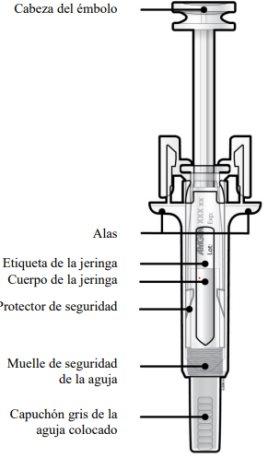
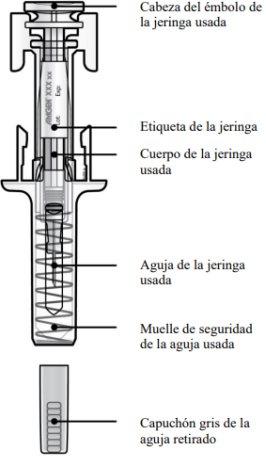
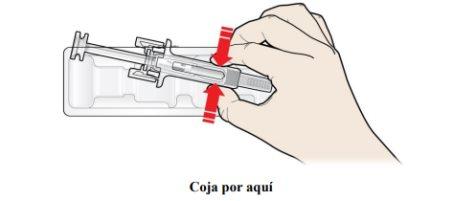
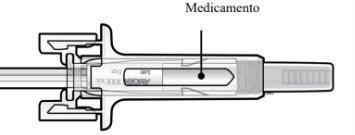
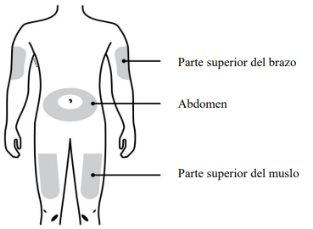
 Do notinject into areas where the skin is sensitive, bruised, red, or hardened.
Do notinject into areas where the skin is sensitive, bruised, red, or hardened.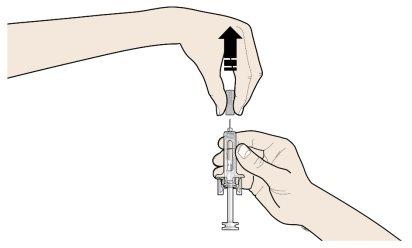
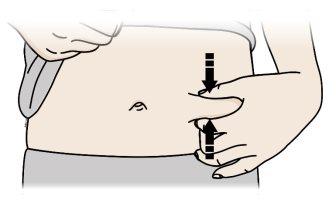
 It is important to keep the skin pinched when injecting.
It is important to keep the skin pinched when injecting.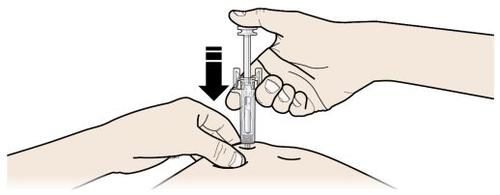
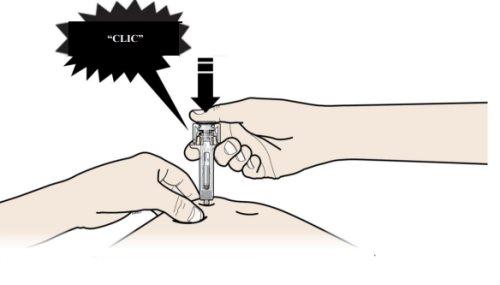
 It is important to press down until you hear the “click” to receive your full dose.
It is important to press down until you hear the “click” to receive your full dose.